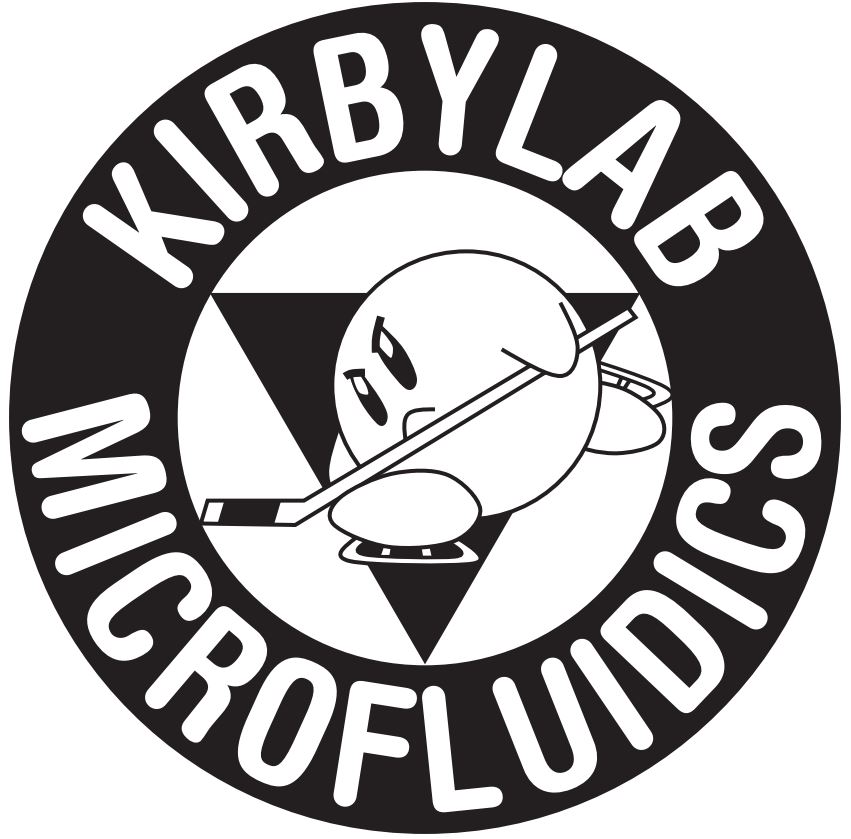How to Sort Circulating Tumor Cells Part II: Immunocapture
x-posted at Erica Pratt’s blog
Keywords
Antibody: A Y-shaped protein that binds to unique cellular targets (i.e. antigens). Read more about antibody function here.
Aptamer: A peptide, RNA or DNA that binds to unique cellular targets and is analogous to antibodies. Aptamers are easier to produce synthetically and are generally more stable than antibodies binding to the same target. Read more about antibodies vs. aptamers here.
CTC:Circulating tumor cell. Read about what they are and why they’re important here.
Downregulation: Suppression of a cellular component, e.g. protein or receptor.
Erythrocyte: Red blood cell.
Leukocyte: White blood cell.
What is immunocapture?
Immunocapture is analogous micro-scale affinity chromatography based on some unique cell characteristic. For CTC capture, this is usually a cell surface marker (e.g. protein or receptor) that is sticking out of the cell membrane, as seen in my cartoon below. If you can manufacture an antibody or aptamer that is specific only for that cell surface marker, you can chemically link these antibodies/aptamers to device surfaces (a process commonly called immunochemistry) and start pulling CTCs out of blood samples.
Why is immunocapture so commonly used?
A major advantage of immunocapture-based systems is the ability to process CTCs from whole blood. This means the blood sample does not need to be diluted, or treated with buffers to remove unwanted cell types, increasing throughput and reducing user handling. As other isolation techniques have matured, more and more are capable of processing whole blood, but immunocapture systems were one of the first, and remain one of the most commonly used.
Immunocapture is also an attractive option because it can be employed two different ways: affinity- or depletion-based cell isolation. Affinity isolation focuses on removing CTCs from other blood cells1,2,3, while negative depletion4,5,6 focuses on removing all other blood components, leaving mostly CTCs behind. Overall, immunochemistry is a very flexible method of CTC isolation, given you have a cell surface marker specific to cancer cells, and an antibody/aptamer that is highly specific to it.
What types of engineering techniques are used?
There’s a wide variety of device designs that rely on immunocapture for CTC isolation. Below is a non-exhaustive, but representative, figure of the kinds of strategies that have been successfully used to isolate cancer cells from whole blood (click to enlarge)-the labels/categories used are my own. Magnetic microbeads are the most common clinically used technique, in large part because the only FDA-approved CTC isolation device (the Veridex CellSearch) uses this method. Micropillar arrays1,2, micro-/nanostructured surfaces7,8, and micromixers9,10 are all newer technologies.
Different immunocapture strategies prioritize different performance metrics, making comparison more difficult than for size-based sorting. Micromixers and microbeads tend to prioritize maximizing cell-immunochemistry interaction, resulting in isolation of a lot of CTCs, but at the cost of capturing more contaminating cells (usually leukocytes, as is the case with size-based capture). In contrast, micropillar arrays generally balance capture and contamination, leading to higher purities than micromixer and microbead methods, but lower capture efficiencies.
What are the drawbacks of using immunocapture?
The ideal immunocapture system requires a cell surface marker that is uniformly expressed across all CTCs, and with high density to improve chances of capture. The ideal system also requires an antibody or aptamer that is 100% specific to the CTC, i.e. no non-specific cell binding. In reality, the cell surface marker expression is often variable from CTC to CTC, and the antibody targeting it may be too specific (causing it to miss altered markers), or not specific enough (resulting in more non-specific adhesion).
Most importantly, immunocapture requires you to know a priori what cell surface markers are expressed by CTCs. As you might imagine, this is rarely the case, and there are always exceptions. The closest thing to a pan-cancer CTC cell surface marker has been shown to be downregulated by some cancer cells in order to escape detection by the immune system, and to boost their ability to move around the body.
When should you use immunocapture to isolate CTCs?
Immunocapture is a good option for CTC isolation when:
- There is a highly-expressed and robust CTC cell surface marker.
Targets can be found by looking normal tissue from the same organ type as the cancer, or through testing of immortalized cell lines. - If high purity CTC isolation is required.
- If whole blood processing is needed.
- If the CTC distribution is too heterogeneous for size-based sorting.
References
1. Nagrath et al. Isolation of rare circulating tumour cells in cancer patients by microchip technology. Nature 2007; 450:1235-1239
2. Gleghorn et al. Capture of circulating tumor cells from whole blood of prostate cancer patients using geometrically enhanced differential immunocapture and a prostate-specific antibody. LOC 2010; 10:27-29
3. Dharmasiri et al. High-Throughput Selection, Enumeration, Electrokinetic Manipulation, and Molecular Profiling of Low-Abundance Circulating Tumor Cells Using a Microfluidic System. Anal. Chem. 2011; 83(6):2301-2309
4. Lara et al. Enrichment of rare cancer cells through depletion of normal cells using density and flow-through, immunomagnetic cell separation. Exp. Hematol. 2004; 32:891-904
5. Yang et al. Optimization of an enrichment process for circulating tumor cells from the blood of head and neck cancer patients through depletion of normal cells. Biotechnol. Bioeng. 2009; 102(2):521-534
6. Liu et al. Negative enrichment by immunomagnetic nanobeads for unbiased characterization of circulating tumor cells from peripheral blood of cancer patients. J. Transl. Med. 2011; 9(70)
7. Wang et al. Three-dimensional nanostructured substrates toward efficient capture of circulating tumor cells. Angew. Chem. Int. Ed. 2009; 48(47):8970-8973
8. Hughes et al. Use of naturally occurring halloysite nanotubes for enhanced capture of flowing cells. Langmuir 2012; 26(14):12155-12164
9. Stott et al. Isolation of circulating tumor cells using a microvortex-generating herringbone-chip. PNAS 2010; 107(43):18392-18397
10. Wang et al. Highly Efficient Capture of Circulating Tumor Cells by Using Nanostructured Silicon Substrates with Integrated Chaotic Micromixers. Angew. Chem. Int. Ed. 2011; 50(13):3084-3088


